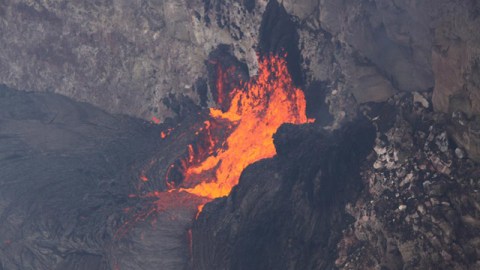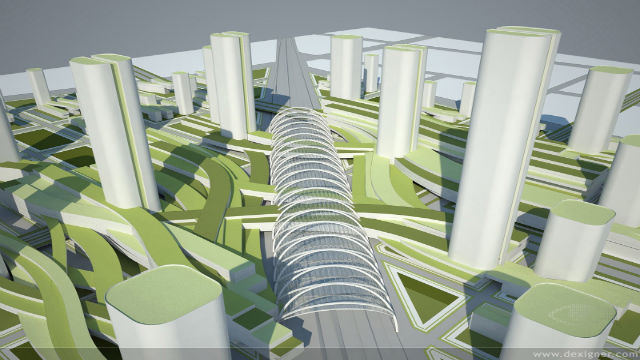Monday Musings: Hawai`i, Chad, seamounts and volcanoes in Haiti?

Want to get a some more volcano news from aspiring bloggers in my First Year class? Check out their first posts on the blog for the class – we’ll be continuing to add posts as the semester goes on. Feel free to leave comments to cheer them on (but remember, this is the first time many of them have ever blogged, let alone about volcanoes!)
News for this Monday evening:
Hawai`i: Lots of video and information on the rising lava lake at Halema`uma`u, the eruption at Pu`u O`o (top left) and the subsequent collapses of the pit crater. HVO released video of the spatter cone and lava flows from the flank Pu`u O`o vent and it never ceases to amaze me to think that all the orange, gooey material is rock at room temperature. The floor under Pu`u O`o have risen over ~60 meters / 200 feet in the last year, suggesting new magma under the vent (and the eruption back that idea up as well). The lava lake at Halema`uma`u had reached its highest levels ever earlier in the week, but activity there has waned some by the weekend. Keep an eye on the webcams for more action.
Volcanoes of Chad: The NASA Earth Observatory featured a relatively obscure volcano this week with an image of Emi Koussi in Chad. Emi Koussi, beyond being MVP #19, is a large shield volcano with a prominent summit caldera along with a number of small parasitic scoria cones on its flanks. However, unlike the effusive shield volcanoes like Mauna Loa, Emi Koussi is a pyroclastic shield similar to Rabaul, made of numerous explosive deposits creating the low, broad slopes. It is unclear when Emi Koussi last erupted.
Louisville Seamounts: I also ran into a few articles about research being conducted on the Louisville Seamount chain, a series of undersea volcanoes. This work is mostly drilling done on the ocean floor to sample lava flows and other deep-sea deposits but not much is know about these hotspot related volcanoes located north of New Zealand off the Kermadec arc. You can watch a brief video about the expedition that took place in late 2010/early 2011 and you’d be surprised how much information there is about these expeditions, including blogs of each mission of the JOIDES Resolution.
Etna: After Friday’s eruptive activity, things have definitely quieted down at Italy’s Etna. Dr. Boris Behncke has posted some nice images of the Southeast Crater showing the evidence of the strombolian activity, including a small lava flow and plenty of tephra scattered on the white slopes of the volcano (and as an aside, I didn’t realize Etna got that much snow.) Be sure to check out the Stromboli webcams, though, for some of the ongoing action there.
Haiti: One article passed onto me via Twitter was a fear of volcanic activity near the epicenter of the 2010 Haitian earthquake. Now, this is the first I have heard of this and there are no active volcanoes on Haiti, so anything even resembling volcanism or hydrothermal activity would be very surprising. In fact, the director of the Haitian Bureau of Mines and Energy suggests that the reports is really methane gas burning underground (French). It is not unheard of for faults to be preferential conduits for hydrothermal waters – we see this in the Cascades, but I am skeptical of this report with any more proof than what the article posits. However, as with any report like this, it is likely worth filing if anything else pops up.
Top left: Part of the current eruption at Pu`u O`o in Hawai`i. Image courtesy of the USGS/HVO.





